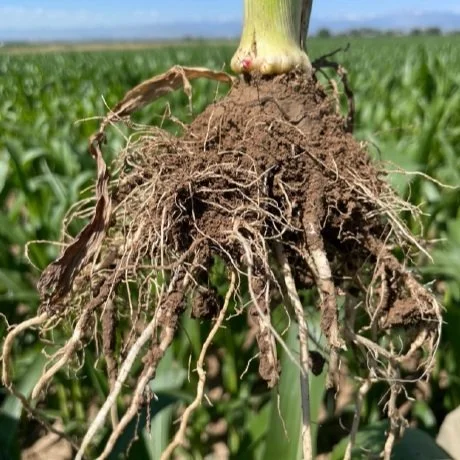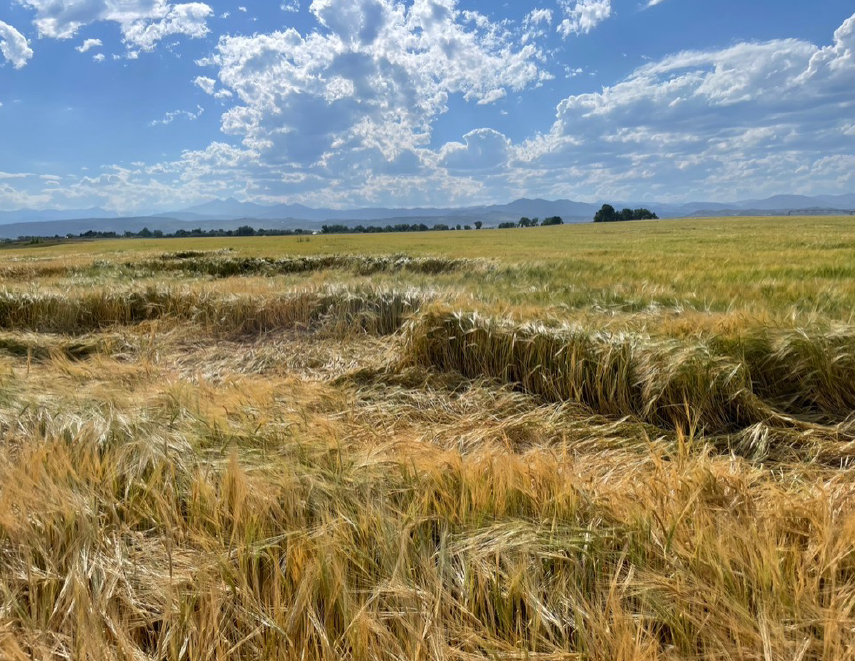What do farmers do in winter?
Sip whiskey? Ski the slopes? Repair tractors?
Sit in the malthouse office and listen to presentations on soil science while perusing photos of weevils and root balls?
The last option, obviously. Maybe a little of the first three, as well.
While the winter is the off-season for farmers, it certainly doesn’t mean that it’s all whiskey while skiing. Or beer while repairing. Or sleeping in late, eating pancakes, and taking long walks with the dog in the park. (Who are we kidding anyway? Thompson doesn’t do walks or parks. He does cornfields at Mach speeds, only.)
Winter provides a good time for reflecting on how the last growing season went, and planning how to do better for the next one. Our soil, the most valuable commodity we have, is a key part of that reflection and that’s why this year we partnered with Red Dog Soils during the growing season to monitor the work we do and evaluate the current state of our fields. At the end of 2023, we sat down to get the results.
As with so many things in life, the results were a mixed bag.
Soil science is very….well…science-y. It’s kind of math-y, too. Just look at this summary. This is one of 52 slides we reviewed in doing an in-depth dig into our soil.
Don’t worry….we’re not going to give you 52 slides worth of soil samples.
We’re gonna give you the, “Quick! Summarize it! We wanna go drink beer!” version.
N, P, K (Nitrogen, Phosphorus, and Potassium) is the baseline chemistry of all a farmer does. As key as water and sunshine, these three elements are absolutely necessary to produce healthy plants. A deficiency in any of the three will have visible impacts. Once the NPK in a field is nailed down, there are all sorts of other goodies to dive into: micronutrients, soil fungi, bacteria, beneficial insects, detrimental insects, the list goes on and on.
But, as we discovered, we don’t even have our NPK straight. Not even after the years of work we’ve done. We’re short on Phosphorus and Potassium in most fields. We’ve got too much bacteria and too little fungi. We have lots of pest nematods and a whopping zero beneficial nematodes. Several fields need improved soil structure and, and, and…
So should we throw in the towel and stop farming?
Nah.
Nothing worth doing is easy and we are making progress. The fields we cover crop are retaining more moisture, a key to improved biology. The plants we used a foliar spray on showed marked improvement. We’re constantly evolving our crop rotations, reducing tillage, and giving our land a chance to heal.
It’s easy, sitting in a Farm-to-Fork restaurant to preach the benefits of regenerative agriculture and wax poetic about compost, carbon sequestration, and this new generation of eco-responsible farmers, but the boots-on-the-ground reality of farming is that it’s not just about sprinkling some fairy dust in the form of cow manure around, then calling it good. It’s a slow process. We’ll make mistakes, figure out adjustments, and try again.
But when you get one try per year, it takes time…lots of time.
We’re in it for the long haul, and we’re in it for generations: future generations of farmers to whom we hope to leave an optimistic legacy and healthy fields.
Right after we go enjoy just a couple more winter beers, that is.
— Your Olander Farms Team








